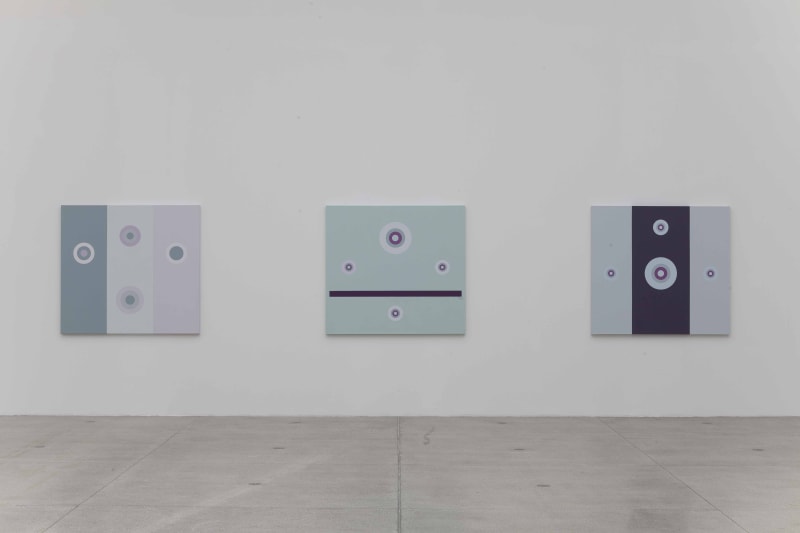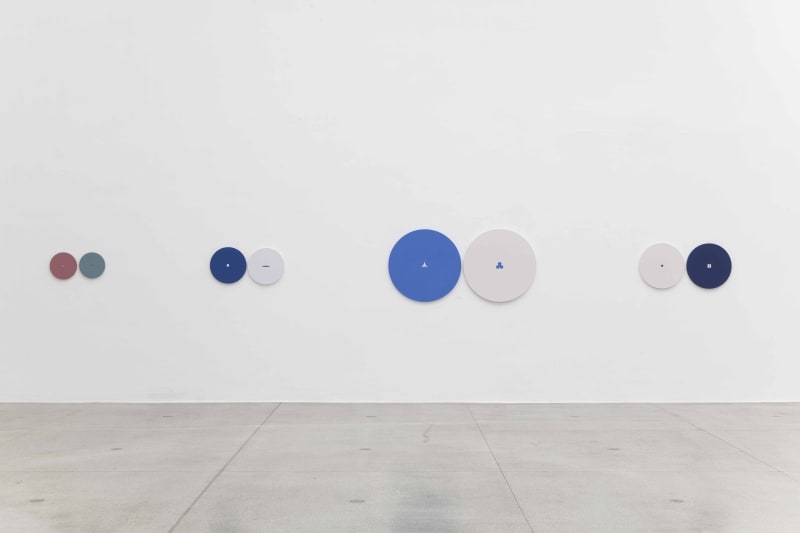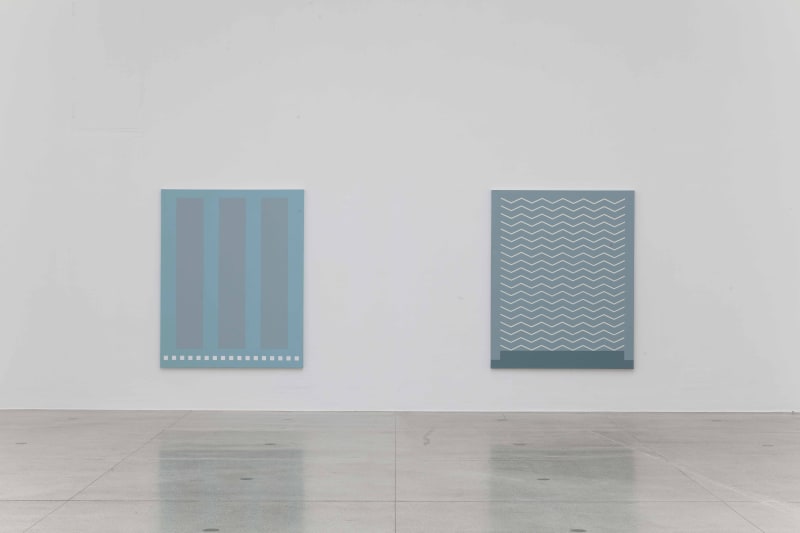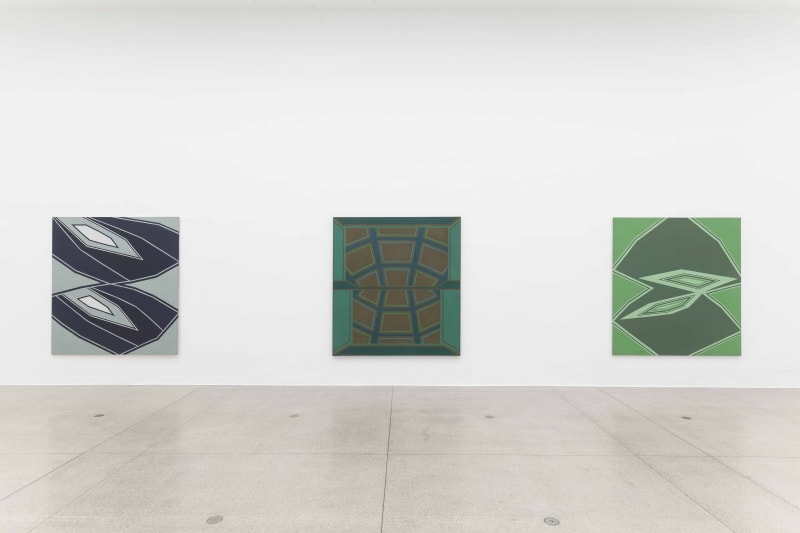For over sixty years, Tess Jaray has made formally austere paintings, dedicating herself to an analysis of the relationships between painting and architecture, between picture and beholder. In England, where the artist has lived since 1938, she is known to broad audiences primarily thanks to her numerous commissioned works in public settings such as her designs for the piazza at Victoria Station, London, and Birmingham’s Centenary Square. Major collections including the Tate and the British Museum have acquired her art.
By contrast, she has remained largely obscure in Austria, where she was born in 1937, a fate that she shares with many Austrian emigrants: in 1938, her Jewish family escaped the Nazi regime for England, where Jaray was raised in rural Worcestershire. She moved to London at a young age to study at the renowned Saint Martins School of Art (1955–57) and the Slade School of Fine Art (1957–60), and where Ernst H. Gombrich, one of the twentieth century’s most influential art historians, was among her teachers. In 1968, she was the first woman to join the faculty at Slade; she taught there until her retirement in 1999. She was made a member of the Royal Academy in 2011.
The formative experience that sparked Jaray’s lifelong interest in exploring space in painting, which remains the central concern in her work, was a stay of several months in Italy in 1960, where she first saw the painting of the Renaissance in its native architectural context. The interrelation between the architectonic space of the pictures and the real architecture around them, which rests on mathematical and rational principles (which she claims to know nothing about) made a profound impression on her, as did the lucidity of simple lines. Both her paintings and her extensive graphic oeuvre – prints and drawings – reflect the play with basic geometric shapes and lines that engender perspectival depth and space. Besides the painting and architecture of the Italian Renaissance, Jaray also found a prolific source of inspiration in the visual elements and formal abstraction of Islamic art, which she studied on many trips. Geometric patterns, repetition, and the ability to obtain infinitely many variations with minute modifications of the parameters are defining characters of the artist’s works, which often require no more than a few lines, dots, or color fields. The iterative aspect and relentless formal reduction as well as the intimation of space and architecture lend her compositions an enigmatic aspect. Jaray’s art is an empirical investigation of the effects of space, pattern, repetition, and color on a space and the beholder.






